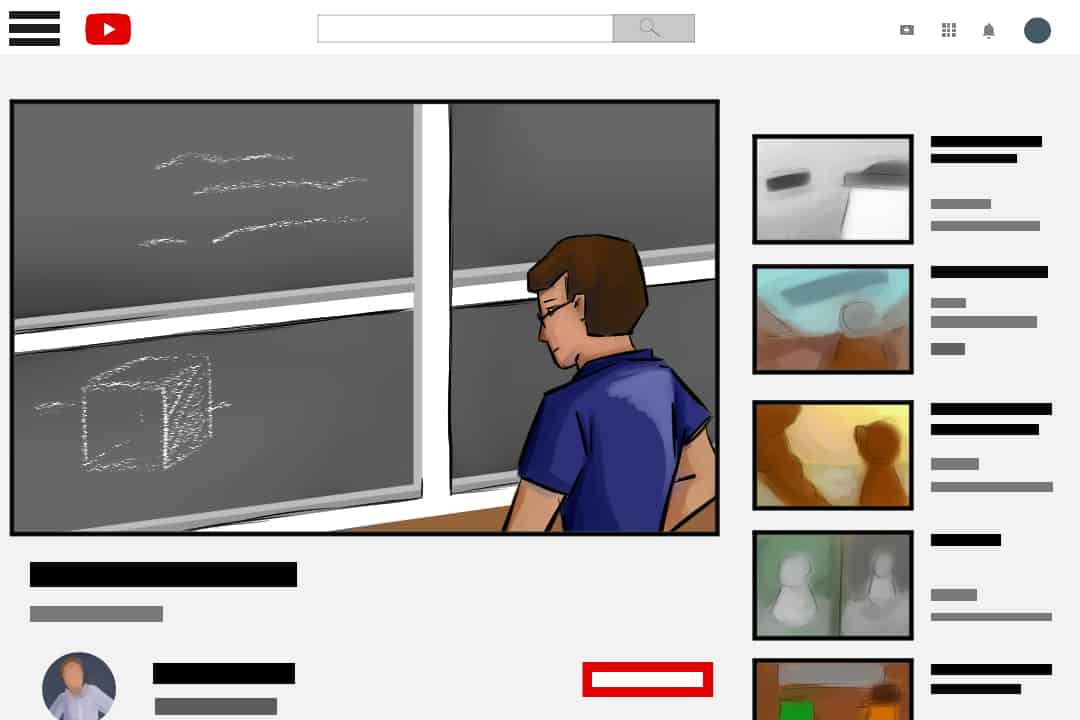As courses transition to online learning, many instructors are turning to YouTube as a platform for teaching. Accessible and robust, YouTube was a clear contender for instructors looking for a video-hosting platform. Some have been uploading to YouTube even before the transition to online delivery, contributing to the platform’s large community of education and science channels.
The Varsity spoke with professors from various departments at U of T who have delved into YouTube as a platform for teaching, using various formats.
Flipped courses have advantages
In a series of lectures recorded for the first-year course HPS100 — Introduction to History and Philosophy of Science, Dr. Hakob Barseghyan lectures on a well-lit stage with a red curtain behind him, reminiscent of a TED talk. The course has been held in this online and “fully flexible” format since 2015 through pre-recorded lecture videos and live online tutorials.
Life science courses have also been uploading lecture videos to YouTube. The instructors for courses such as HMB300 — Neurobiology of Behaviour and CJH332 — Cellular and Molecular Neurobiology of the Synapse made use of YouTube’s live streaming features last year by streaming lectures.
Dr. William Ju, a professor in the human biology program, is an instructor for both of these courses and has also recently started a YouTube channel, uploading lecture recordings from courses such as PSL300 — Human Physiology I and vlogs showing behind-the-scenes footage of his experiences teaching dual-delivery courses.
Dr. Alfonso Gracia-Saz, a professor in the Department of Mathematics, has built up an extensive collection of videos on the MAT137 — Calculus with Proofs YouTube channel as part of the first-year calculus course’s inverted classroom structure. Students are expected to learn the basics from the videos so that they can spend lectures solving problems and putting their learning to practice.
Gracia-Saz began creating the inverted course over four years ago, following his observation that learning math requires both a “first contact” stage, in which students learn the basic concepts passively — the focus of a traditional lecture — as well as a “practice” stage, which involves actively solving problems.
In an email to The Varsity, Gracia-Saz explained the value of using lecture time to focus on practice — the more difficult part of learning — while allowing students to learn basic concepts through videos at their own pace. “[A] video that students can watch whenever convenient, that they can pause and rewind, will always beat a traditional lecture,” Gracia-Saz wrote.
The videos and their convenience can be useful for large first-year courses like MAT137. And now, certainly, the virtual lectures’ utility, particularly in the age of COVID-19 and online learning, is also evident.
“We got lucky: we are definitely in a better position than other courses thanks to the videos,” Gracia-Saz wrote. “We could continue with the same structure, and I just had to adapt the class practice problems. I did have to adapt them: what works well in a physical classroom may not work well online. But at the very least, even if everything else fails, we can rely on the video collection as an ‘anchor’ for the course.”
Choosing video format and lecture style
Dr. Scott Ramsay, an associate professor in U of T’s Department of Materials Science and Engineering, also expressed that using YouTube for his courses in previous years has allowed for a smoother transition to online learning.
Ramsay started his YouTube channel eight years ago with a simple chalkboard and camera set-up to explain example problems and previous test questions that couldn’t be covered during lecture. Since then, he has experimented with various video formats and styles, incorporating tablets, new cameras, lighting, and audio set-ups.
In an interview with The Varsity, Ramsay described his process of creating YouTube videos as “iterative,” as he is always seeking to improve the videos and make them more engaging. After trying various strategies — reading from a teleprompter script, creating videos for an entire course using Khan Academy-esque blackboard and narration, and adding a video feed of himself alongside the tablet in a “talking head” style — Ramsay settled on his current set-up, with a tablet and three cameras at various angles.
Through these many iterations of video formats, Ramsay was able to find a delivery method that best matches his teaching style and strengths as an instructor. Ramsay’s current set-up allows him to switch between writing examples on the tablet and explaining concepts directly through the camera, where he is able to gesture, show demonstrations, and engage with students.
“I realized that I shouldn’t be trying to change my style to match the video format. There’s so many different video formats and ways you can do it,” Ramsay said. “I changed the format to match my style, and I think that really worked well.”
Ramsay also commented on the potential of using YouTube analytics to improve teaching. Instructors can look into parts of the video where viewers are rewinding and rewatching to gain insight about how their teaching could be improved. Statistics are also available for the locations and times that viewers are tuning into videos.
Through their exploration of different teaching methods on YouTube, Ramsay, Gracia-Saz, and other instructors have gained many insights to aid their transition to online learning. For the current school year, Ramsay already has much of the lecture material for his first-year courses up on YouTube, some unlisted and some open to the public. However, he hopes to continue improving on iterations of his content to make more engaging videos.


